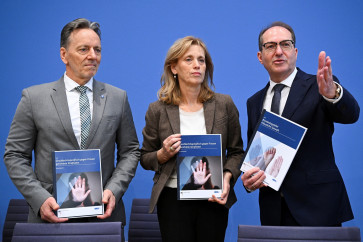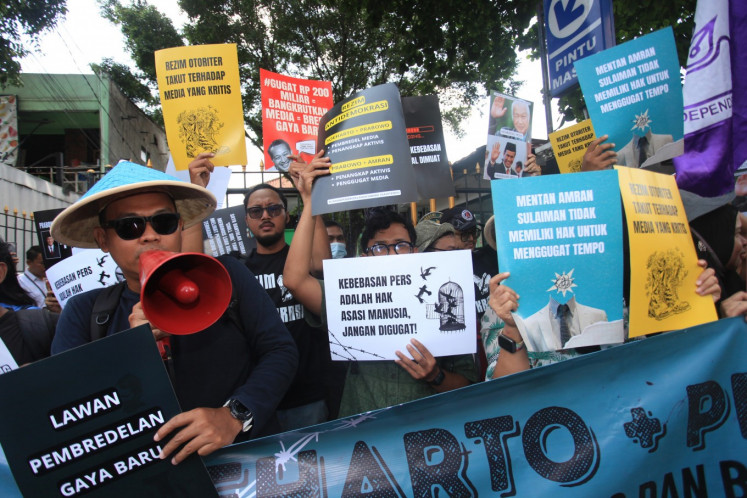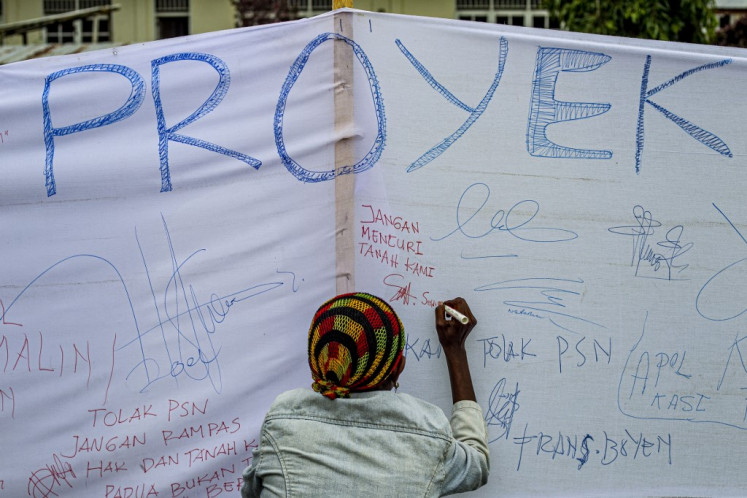Popular Reads
Top Results
Can't find what you're looking for?
View all search resultsPopular Reads
Top Results
Can't find what you're looking for?
View all search resultsLesson from West Java: Digitalizing learning
In recent years, the affordability of rapidly progressing digital technology has gradually narrowed the gap between the haves and have-nots, and enabled millions of young people in developed and developing countries to benefit from the digital world
Change text size
Gift Premium Articles
to Anyone
I
n recent years, the affordability of rapidly progressing digital technology has gradually narrowed the gap between the haves and have-nots, and enabled millions of young people in developed and developing countries to benefit from the digital world.
Digitalization has likewise profoundly transformed education. Though digital divide still exists and much needs to be done to make sure no one is left out, digitalization is inescapable in education for several reasons.
First, digitalization provides more room for customization. Second, it saves time and energy. Third, it forces schools to adapt to technology — with numerous digital applications that can make subjects like mathematics a fun but still meaningful learning experience for students, schools have no choice but to be adaptable. Fourth, it provides a greater practical approach and flexibility.
Digitalization of education helps widen access to education.
A major digital education project called ProFuturo, for example, is bringing high quality basic education to 2 million children and teens in Africa and Latin America, and will soon expand to Asia, reaching at least 10 million children in the coming years.
The Indonesian government is also facilitating the digitalization of nonformal education sector. As many as 17,000 nonformal courses have begun to gradually develop massive open online courses, making them available to wider societies.
In West Java, open and distance learning with the help of information and communications technology (ICT) has increased the school enrolment rate from 68.76 percent in 2016 to 72.35 percent in 2017 and 81.25 percent in 2018. The distance-learning program in the province has been designed to employ a hybrid or blended mode of ICT-based open and distance learning.
This method is implemented in two types of schools, namely regular senior high schools and senior vocational high schools, with learning centers as an integral part in both. The main difference is that the vocational type provides industries as learning centers, so that it can attract young workers to pursue secondary education without leaving their current jobs.
The program allows a learner to study by using an independent learning system that cooperates with industry, in a combination of distance learning using internet networks and face-to-face learning, and practice with business or industry players.
In a wider scope, this program is expected to reduce unskilled workers and improve their working skills and capabilities, as well as provide the widest possible learning opportunities to those who are unable to attend regular high school.
As many as 492 schools (311 senior high schools and 181 vocational high schools) in 2017 and 513 schools (325 senior high schools and 108 vocational high schools) in 2018 were involved as “main schools”, which provide open and distance learning to 1,257 learning centers for senior high school students and 1,334 industries as learning centers for vocational high school students.
Altogether, 31,304 students senior high schools and 11,802 students at vocational high schools were involved and registered.
The hybrid mode allows participants to study while not leaving work. The face-to-face tutorials (synchronous) can help students learn better and tutorial sessions are also an effective way to interact, while face-to-face online tutorials (asynchronous) are facilitated through a learning management system (LMS).
The LMS provides a powerful set of features to create and manage courses, as well as track student attendance and performance. The expectation for the utilization of LMS is that students will become more familiar with online learning activities as a medium that is detrimental when students are not in a face-to-face situation.
The face-to-face approach is implemented during the practice and practicum session assisted and facilitated by tutors. The web-based course becomes the main delivery mode and is enhanced and blended with face-to-face and video conference components. This type of delivery is implemented during the independent study period.
Video conferences are mainly for coordination among teachers and tutors, and for discussion of learning problems that students might encounter during independent learning.
In several main schools, the program has run relatively well. For instance, one vocational high school in Pangandaran regency, West Java, with a competency focus in agribusiness and fisheries collaborated with a tuna export company. In one academic year, participants studied at the company for six months, and another six months through a blended learning mode at the main school or learning center.
Another high school in Padalarang, also in West Java, with a competency focus in agribusiness and horticulture collaborated with a farmers’ association, allowing participating students to experience actual work on the field, while they learned relevant theories online and offline at the learning center.
However, challenges persist. Many schools and learning centers, particularly in rural areas, are still grappling with the new learning environment. ICT-based virtual classrooms are a totally new learning experience for both teachers and students.
Online learning also demands much time and intensive work, thus time management and self-discipline matter. In some cases, students found themselves excited and highly motivated at first, but later become disillusioned as the workload becoming overwhelming.
Another challenge is to ensure that the system really taps into students’ potential and that proper teaching and learning takes place to reach quality standard.
The fact that this has helped increase access to education and catapulted the school enrollment rate is undoubtedly a major breakthrough. Moreover, this is in line with President Joko “Jokowi” Widodo’s aim to concentrate on human resources development in his second term of office.
However, unremitting improvement to blended learning with more effective interaction to heighten students’ skills and knowledge and enrich their social experience is needed to ensure that ICT-based open and distance learning results in the expected outcome.
_____________________
The writer is director of the Southeast Asian Ministers of Education Organization Regional Open Learning Center and lecturer at the School of Education, Sultan Ageng Tirtayasa University, Serang, Banten. The views expressed are his own.










